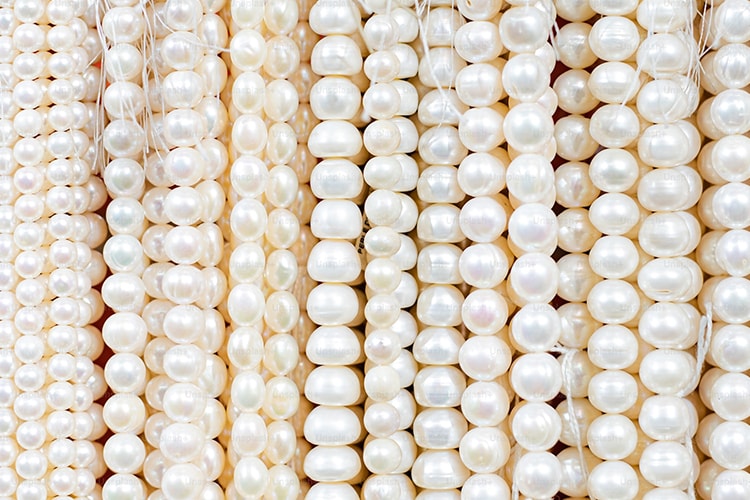How to Identify Real Pearls

A few quick tests you can perform to determine if a pearl is real or fake. How can you tell the difference between real pearls and fake pearls? Here are several simple and easy tests almost anyone can use to determine if a pearl is real or fake.
The Touch Test
An old wive’s tale says that if you hold a real pearl in your hand, it will be cool to the touch for several seconds before warming up. Resin or plastic pearls are often warm upon first contact; however, glass pearls may take longer to warm in your hand than real pearls — thus, it is important to remember the Touch Test is not a 100 percent reliable method for checking authenticity.
The Tooth Test
Rub a pearl lightly along the biting edge of your upper front teeth. If it feels slightly rough, sandy or gritty, it’s likely a cultured or natural pearl. This texture you feel is the layers of nacre that have formed over time. If the pearl feels smooth or glassy, it is likely an imitation.
The Sunlight Test
Hold the pearl up to the sunlight or very bright indoor lighting to check for variation’s in a pearl’s color and tone. If the pearl is perfect in color and tone, it is very likely fake.
The Magnifying Glass Test
Look at a pearl through an ordinary magnifying glass. You should be able to see the ridges and irregularities of a real pearl — or the grainy smoothness of a fake pearl.
The Weight Test
A real pearl tends to be heavier than a fake pearl.
The Drill Hole Test
A real pearl is drilled as small as possible to maintain its value; a fake pearl often has a much larger drill hole than a real pearl. The surface of a fake pearl will also often flake off around the drill hole.
The Pearl Shape Test
A real pearl is a product of nature; therefore it is produced with some degree of irregularity. If the pearl is a perfect sphere, it is likely a fake pearl. Real (cultured or natural) near perfectly round pearls are extremely rare and worth substantial amounts of money.
Source: Mastoloni